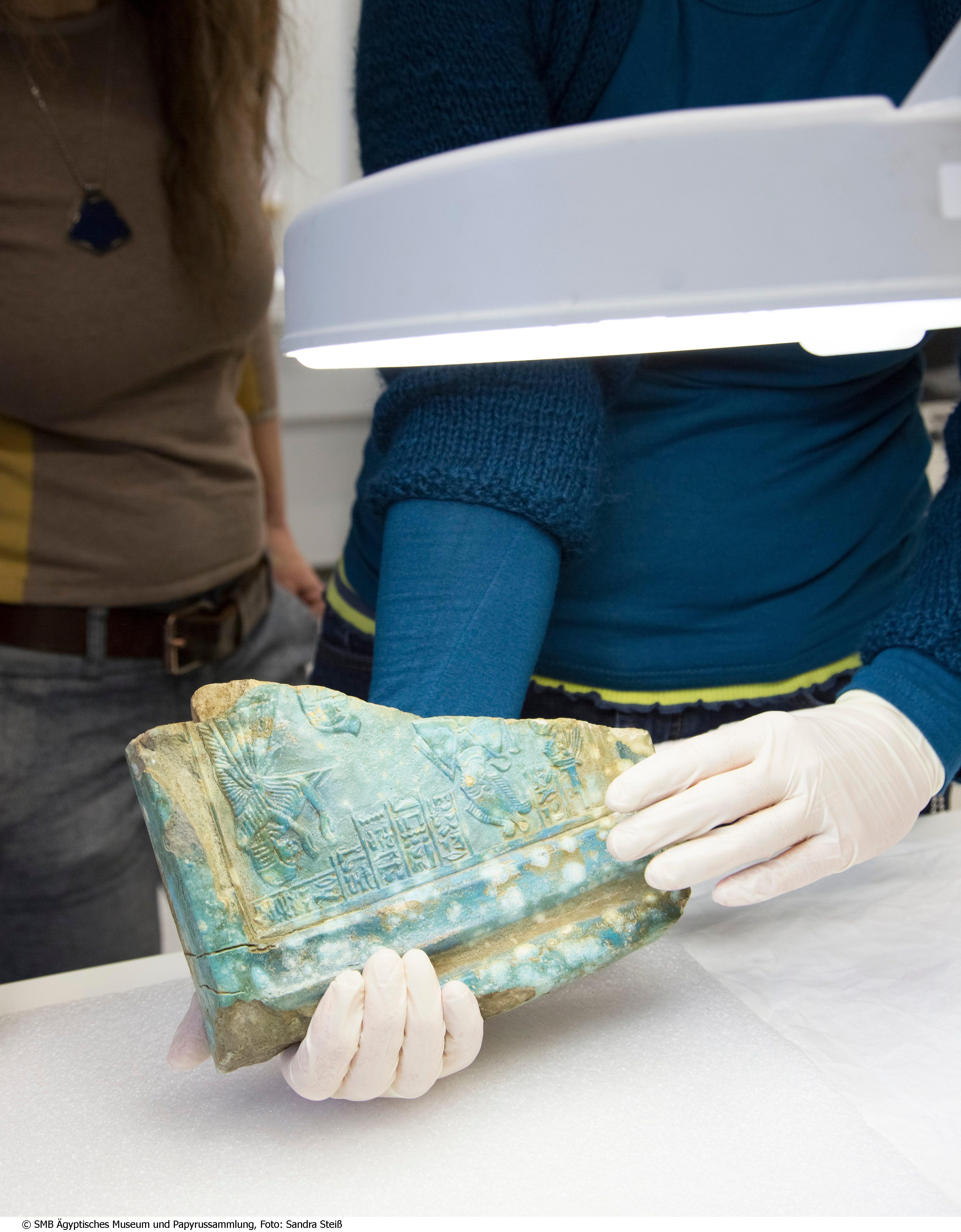An Egyptian Slab Lost in Berlin During World War II Has Been Found—in Michigan
Safe and sound, 70 years later.

When Berlin’s Neues Museum closed in 1939, at the start of World War II, the staff rushed to protect precious items in the collection. As they put important artifacts into storage, someone stashed a 3,200-year-old stone slab from ancient Egypt inside a sarcophagus. After the war, the slab—carved limestone with a turquoise ceramic glaze—was nowhere to be found. Curators wrote it off as one of the many artifacts lost in the chaos. But now, 70 years later, the slab has turned up on another continent.
Nico Staring, a Dutch Egyptologist, noticed the slab in a recent photo from the Kelsey Museum of Archaeology in Ann Arbor, Michigan, and matched it to a historical photo from the Neues Museum. When he informed curators at both museums, the Kelsey Museum offered to return the slab to Berlin. The slab is a portion of a commemorative pillar, or stele, and includes a carving of Ptahmose, a mayor of Memphis. It will be put on permanent display at the Neues Museum this summer.

When the slab was extracted from the sarcophagus is unknown, but according to Live Science, a German art collector eventually sold it to Samuel Abraham Goudsmit in 1945. Goudsmit was a Dutch-American physicist and chief of intelligence for the U.S. Department of Defense for two years. He gifted the slab to the Kelsey Museum, where it sat until Staring spied it. It’s a happy ending for an artifact that escaped the fate—destruction or theft—that befell many priceless works during World War II.































Follow us on Twitter to get the latest on the world's hidden wonders.
Like us on Facebook to get the latest on the world's hidden wonders.
Follow us on Twitter Like us on Facebook